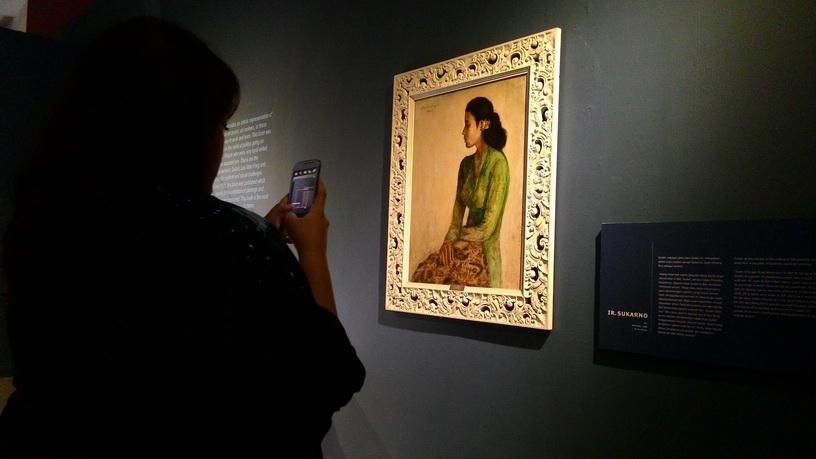ASIACALLING
Sukarno, and his artistic instincts
"President Sukarno collected more than 2,000 works of art by both Indonesian and international artists. But he wasn’t just a collector, he was also a painter himself. The collection is now on display."

Indonesia’s first president was a famous art lover.
Over his lifetime Sukarno collected more than 2,000 works of art by both Indonesian and international artists.
But he wasn’t just a collector, he was also a painter himself.
After decades of being locked inside the presidential palace, Sukarno’s collection was displayed in Jakarta last year.
Ria Apriyani met the exhibition curator, Mikke Susanto, to find out
more.
Dressed in a green kebaya, a traditional Javanese blouse, brown batik and a flower in her left ear, a beautiful and mysterious portrait is now on display at the National Gallery in Jakarta.
Rini was captured in a painting by Sukarno in 1958.
Exhibition curator Mikke Susanto says no one knows for sure who she is.
“Who's the real Rini? It is said she was the depiction of his nanny, called Sarinah. For Sukarno, Sarinah was a depiction of women from that era,” Susanto suggests.
Sarinah played an important role in Sukarno’s life, even warranting a mention in his book.
But the painting of ‘Rini’ has made people curious about the symbol, the woman behind the painting, says Susanto.
“Symbols can be interpreted in many ways. Sukarno had the ability to give particular meaning when he did something.” So far, Susanto has discovered 15 works by Sukarno.
The paintings along with Sukarno’s art collections were kept safe at the palace, while others works were stored by his friends, or went with him in exile.
But “Rini” has been displayed at the Presidential Palace for decades.
Much of Sukarno’s art collection has been held under lock and key at the palace for years.
But this August the collection made its debut at the National Gallery in the capital.
Of the thousands of pieces in the collection, 28 were chosen by the curator to illustrate Indonesia’s fight for independence.
![]()
The exhibition includes works from 22 artists, and, of course, Sukarno.
Sukarno believed the walls of the presidential palace should be filled with art.
But while he happily solicited works, he wasn’t always willing to pay for them, as well-known Indonesian expressionist painter Affandi once discovered.
“One time Affandi came to the Presidential Palace to ask for his debt to be settled. Sukarno was confused because he had no money,” explains Susanto.
“He offered Affandi a presidential pen with President Sukarno’s name carved on it but Affandi refused it. Then Sukarno gave Affandi him and his wife’s used clothes, a sack of rice, and a presidential physician. At the time, Affandi had asked for money so he could seek medical help for his sick wife,” says Susanto.
Besides buying art from known painters, Sukarno also hunted down art during his travels abroad.
One of the prized pieces in his collection is a painting entitled, “Malay Girl with Flower,” by famous Mexican artist, Diego Rivera.
![]()
“The painting was obtained during a presidential visit to Mexico. The model was a diplomat’s wife, Ainsyah Effendy. She was prompted by her husband, Boes Effendy to be painted by Diego Rivera. At the time she was expecting her second child,” says Susanto.
While many works have survived over time, curator Mikke Susanto says that thousands have been damaged by natural conditions, like the tropical climate.
The Indonesian government has struggled to find funds to maintain the paintings, which is why Mikke advised that other parties be engaged to help.
“Those works that were neglected, it was due to the limited budget and staff. I mean the ministry has to be partner, the restoration cannot only be left to civil servants.”
Even though it was left for years, the collection remains a priceless part of Indonesian history.
![]()
- President Sukarno
- National Gallery Jakarta
- Mikke Susanto
Komentar (0)
KBR percaya pembaca situs ini adalah orang-orang yang cerdas dan terpelajar. Karena itu mari kita gunakan kata-kata yang santun di dalam kolom komentar ini. Kalimat yang sopan, menjauhi prasangka SARA (suku, agama, ras dan antargolongan), pasti akan lebih didengar. Yuk, kita praktikkan!